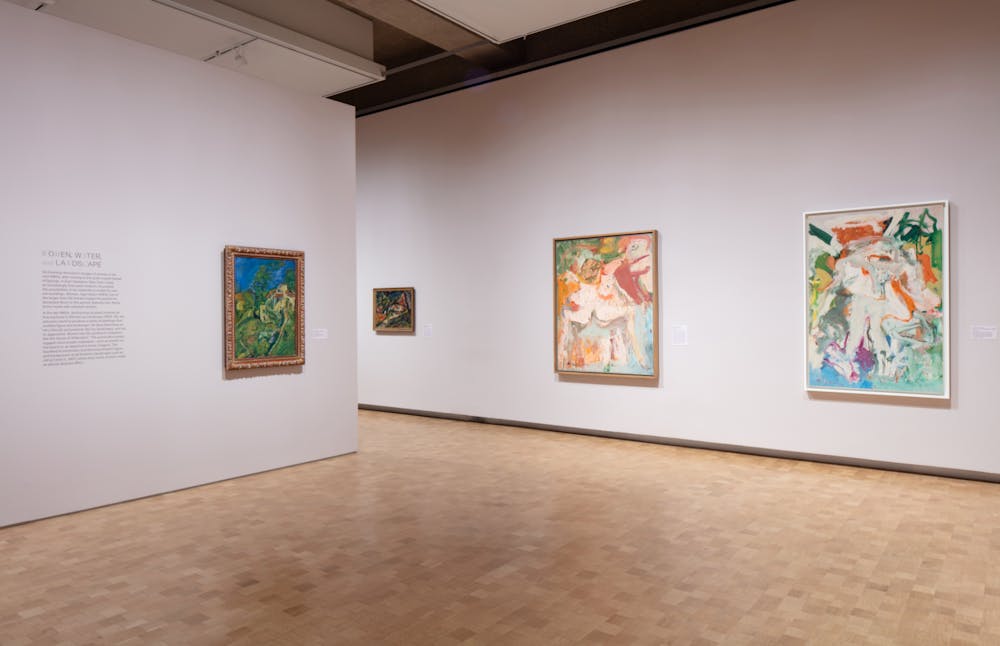I arrive at the Barnes Museum at around 9:30 a.m. on a Wednesday morning. Almost immediately, I'm greeted by a visual that could rival most masterpieces: sun rays casting selective shadows over the external facade of the building, illuminating the pond of water near the entrance with an iridescent clarity. However, I soon come to realize that the beauty of the Barnes Foundation’s exterior serves only as a precursor to the visual delights that lie within.
The Soutine / de Kooning: Conversations in Paint exhibition is a collection of around 45 works from Willem de Kooning and Chaïm Soutine, organized into five central themes. Co–curated by Simonetta Fraquelli and Claire Bernardi, the exhibition promises to illuminate the affinities between the two titans of 20th–century art. The energetic brushwork, vibrancy, and labored canvases present in Soutine’s work are reflected in de Kooning’s later paintings, providing evidence of a “visual dialogue” between the two artists.
Before I have the chance to explore the exhibition, I'm introduced to the conceptual background underpinning the exhibition through introductory videos and opening remarks from Fraquelli, Bernardi, and Nancy Ireson, the Gund Family Chief Curator and deputy director for collections and exhibitions. Their comments illuminate larger themes that guide our understanding of the exhibition: the skillful manipulation of paint, the vacillations between classical figuration and abstraction, and the ongoing dialogue between bodily figures and landscapes. Accordingly, the exhibition is organized into five connected, smaller rooms, each displaying a carefully selected collection of works from de Kooning and Soutine.
After exploring the different rooms, I sat down with Ireson to get a better sense of the exhibition’s intentions. Regarding the exhibition’s structure, she says that the primary goal of the organization was to encourage viewers to “get a real feel for how this is a visual dialogue…. The themes give you something to think about, but I think the reaction is still something very emotional and physical.”
Her comments ring true, particularly in the second section, “Looking to the Past,” where viewers are treated to a series of paintings by both artists that feature women as their primary subject matter. De Kooning painted his Woman series at the peak of abstraction in America, when artists and critics alike had declared the human figure as an obsolete subject. His portrayal of a distinctively human figure provoked ire from his peers and critics for being outmoded, outlandish, and even misogynistic.
It’s easy to see how de Kooning’s paintings defied norms: Though you can discern a female figure in his work, Queen of Hearts, the relative abstraction of the painting prevents any true representation of the human body. Similarly, Soutine's Woman in Pink, located within the same section, also presents a visual oxymoron. Here, a woman is clearly hunching in her chair, clothed in swaths of pink and red, but the swirling features of Soutine’s paint render the woman and her chair indistinguishable. It's truly impossible to see where the figurative ends and the abstract begins.
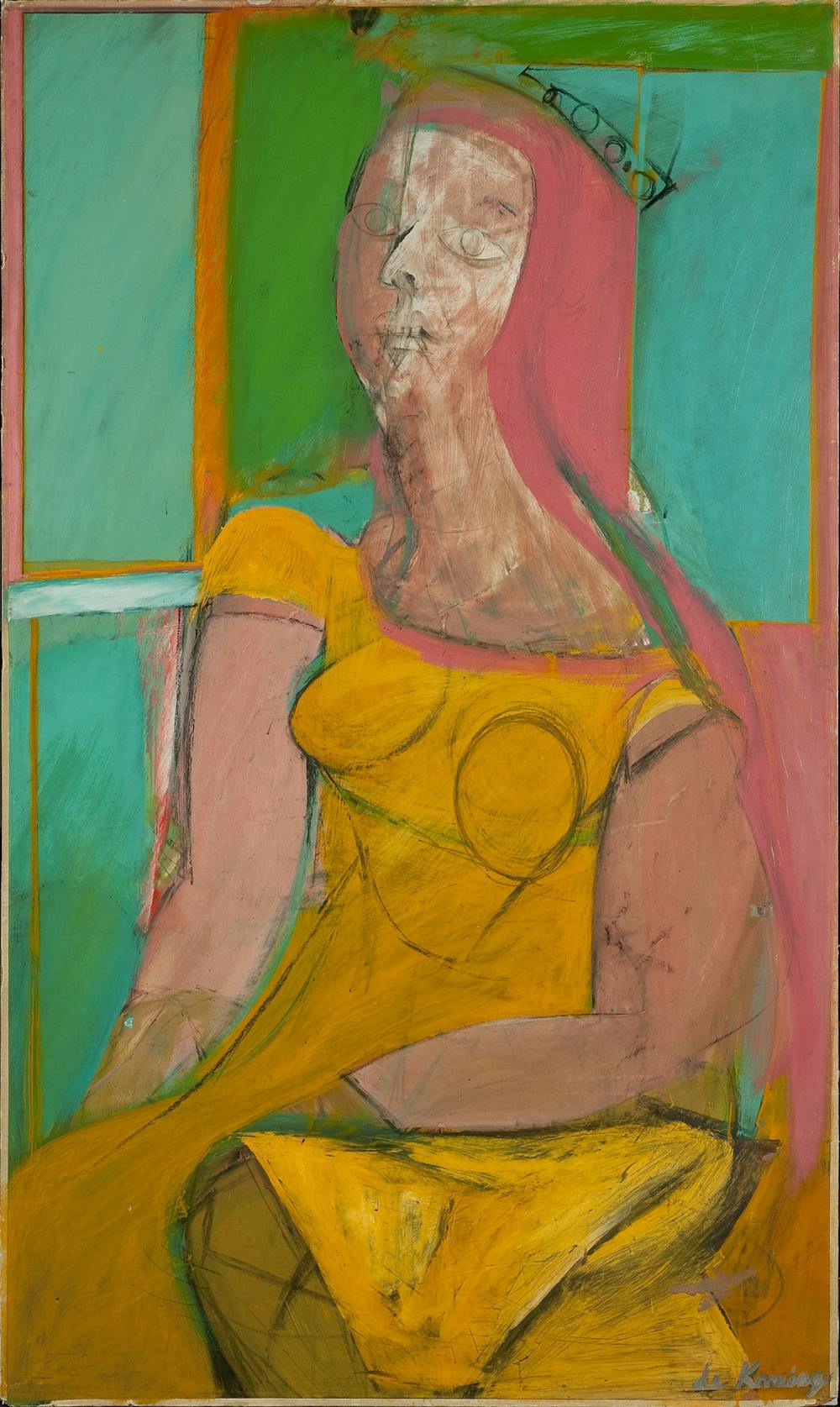
Willem de Kooning
American, b. Netherlands (1904 - 1997)
Queen of Hearts, 1943–46
Oil and charcoal on fiberboard, 46 1⁄8 × 27 5⁄8 in.
(117 × 70 cm)
Hirshhorn Museum and Sculpture Garden, Smithsonian Institution, Washington, DC. Gift of the Joseph H. Hirshhorn Foundation, 1966
Artwork © 2021 The Willem de Kooning Foundation / Artists Rights Society (ARS), New York
Image by Lee Stalsworth, Hirshhorn Museum and Sculpture Garden
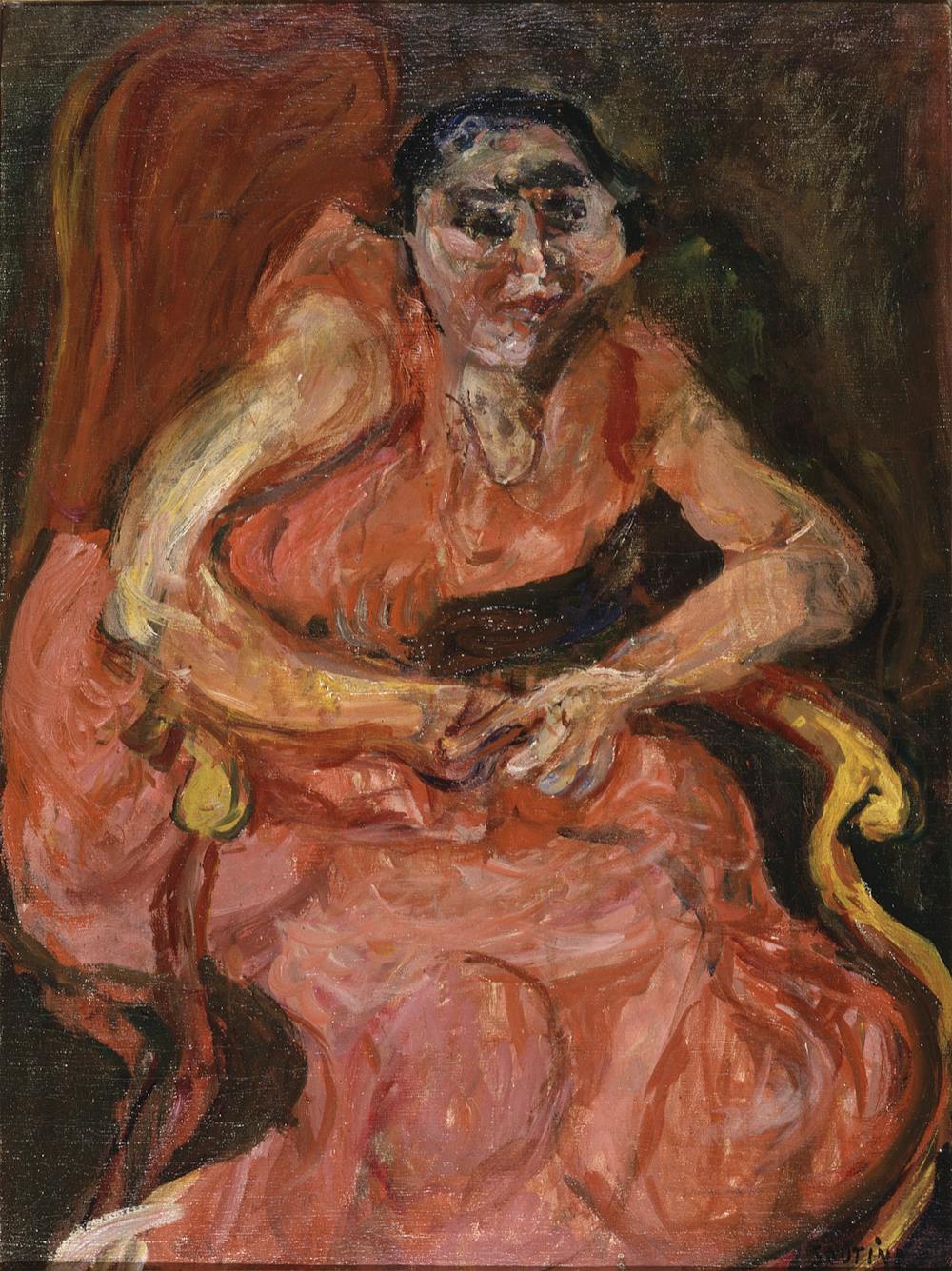
Chaïm Soutine
French, b. Russia (1893 - 1943)
Woman in Pink, c. 1924
Oil on canvas, 28 3⁄4 × 21 3⁄8 in. (73 × 54.3 cm)
Saint Louis Art Museum. Given by Sam J. Levin and Audrey L. Levin, 1992
Artwork © 2021 Artist Rights Society (ARS). New York
Image © Bridgeman Images
The blurred line between abstraction and representation is echoed more explicitly within the “Between the Abstract and Figurative” segment. This section features direct visuals of de Kooning’s iconoclastic Woman series alongside Soutine’s representations of landscapes within the South of France. There's something remarkable about seeing an artwork you’ve only studied in person; as I view de Kooning’s Woman, II, I’m struck by that same feeling of reverence.
On the surface, I can clearly discern the build–up of artistic mediums. The etchings of brushstrokes stand out alongside the marks from pencils. Some parts of the canvas contain more depth than others, but looking at it from a distance still provides the impression of an image on a single plane. It's almost as if you're looking not just at a painting, but the very process that yielded it. In short, the viewer feels as if they are more than watching a visual dialogue; they are ensconced in it.
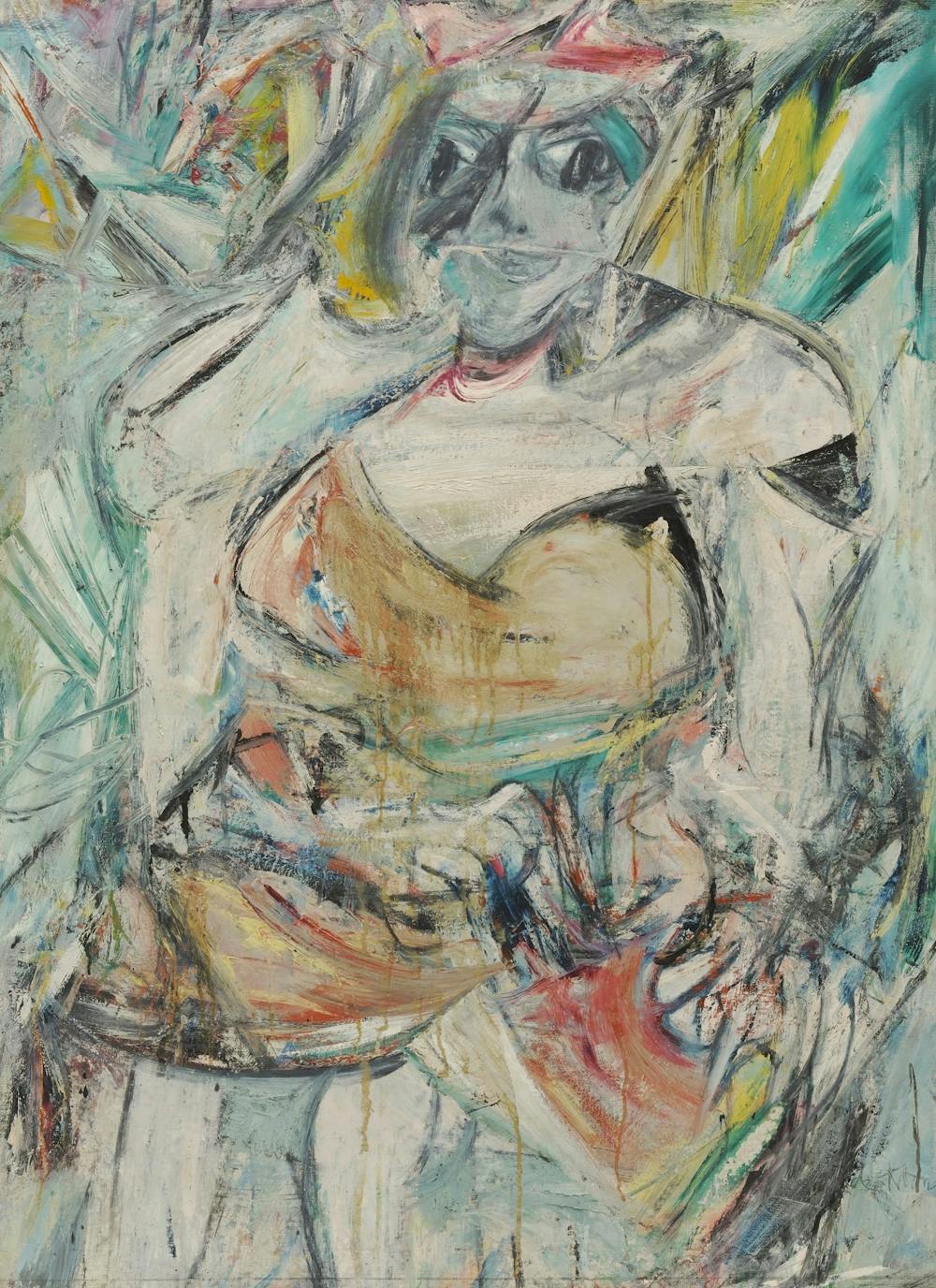
Ireson says that this procedural quality lends the artworks a renewed sense of relevance in the 21st century.
“There's an immediacy in looking at the materials and looking at the handling of paint. And when you look at the surface of the Soutine or a de Kooning, you can feel those gestures, you can really sense the making. So for me, it's that painterly quality that makes [these artworks] so relevant now."
De Kooning, as a pivotal figure in American Abstract Expressionism, is assumed to hold more infamy than his counterpart within the exhibition—which is why I particularly appreciated the section that focused entirely on the works of Soutine. Entitled “Soutine in New York,” this room samples the works of Soutine across a broad range of subjects, with haunting portrayals of the figures that pervade daily life yet go unnoticed in high art, like The Pastry Chef and The Room Service Waiter. This room also gives us a taste of his more abstract, dynamic landscapes.
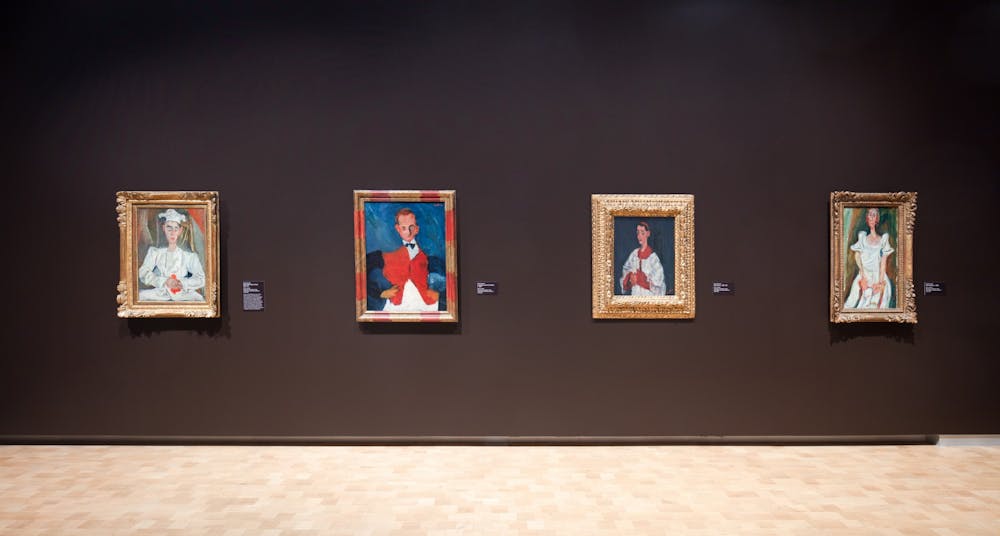
Soutine's landscapes are especially pivotal to the "Women, Water, and Landscapes" section, a room featuring paintings with an ephemeral quality, where every new glance renders a different understanding. De Kooning, in painting Woman in a Garden and Woman Accabonac, was inspired by coastal landscapes, a fact that is reflected in the aquatic quality permeating these works. Soutine’s landscapes also hold a localized quality; glancing at Hill at Céret, you feel as if you are looking at a shifting emotion crystallized within the paint. Interestingly, Soutine’s landscapes bring to mind the swirling quality of Thomas Hart Benton’s regionalist landscapes, even though regionalism existed as a total counterpoint to all the qualities of abstract expressionism. Perhaps this parallel serves as a reminder for the ultimate paradigm of the exhibition, emphasizing the visual dialogue between artists.

Willem de Kooning
American, b. Netherlands (1904 - 1997)
Woman Accabonac, 1966
Oil on paper mounted on canvas, 79 x 35 1⁄8 in.
(200.7 × 89.2 cm)
Whitney Museum of American Art, New York. Purchase, with funds from the artist and Mrs. Bernard F. Gimbel
Artwork © 2021 The Willem de Kooning Foundation / Artists Rights Society (ARS), New York
Image © Whitney Museum of American Art / Licensed by Scala / Art Resource, NY

Chaïm Soutine
French, b. Russia (1893 - 1943)
Landscape with House and Tree, c. 1920–21
Oil on canvas, 29 1⁄4 × 21 5⁄8 in. (55 × 73 cm)
The Barnes Foundation, Philadelphia
Artwork © 2021 Artist Rights Society (ARS). New York Image © 2021 The Barnes Foundation, Philadelphia
The relationship between artists serves as the crux for the exhibition. “I think what's wonderful about [the exhibition] is it shows that nothing happens in a vacuum. We will respond to things that have come before what we're doing now. We hope that they will continue to connect with the future generations,” says Ireson. Though Soutine and de Kooning worked in different geographical and temporal contexts, “there are these really profound touching points. And I think that today, that sense of being connected feels really cool,” she adds.
This connectedness is retained in the two artists’ shared love of abstract expressionism. This artistic movement gained traction amid a particularly difficult epoch in American history. Ireson says that critics have now seen shared affinities within Soutine and de Kooning’s works, based on the difficulties of their respective historical contexts. “They did kind of see a kind of lightness in the difficulty of that experience. They found that it may be some of that expressiveness [in their artwork] came from those shared experiences, even though Soutine was not aware of what de Kooning was doing."
Given the vast sense of disconnection imposed upon us by the COVID–19 pandemic, the exhibit provides refreshing insight into how human connection prevails. Ireson hopes that the collection will encourage people to regain a sense of normalcy, especially within the art world, that has been missing for the last year or so. When I ask her what she hopes people will take away from the exhibition, she responds earnestly, “To fall in love with art again, because these are such wonderful paintings, and we've missed looking at art so much."
On that sunny Wednesday morning, that’s exactly what I did. I fell in love, not just with visual art, but with the dialogue surrounding it. The Soutine / de Kooning exhibition offers more than a chance to see art, it offers a space to actively participate in it.
And for all the college students unsure about their visit, Ireson has a simple, apt response.
“If you like painting, you will like this exhibition.”
